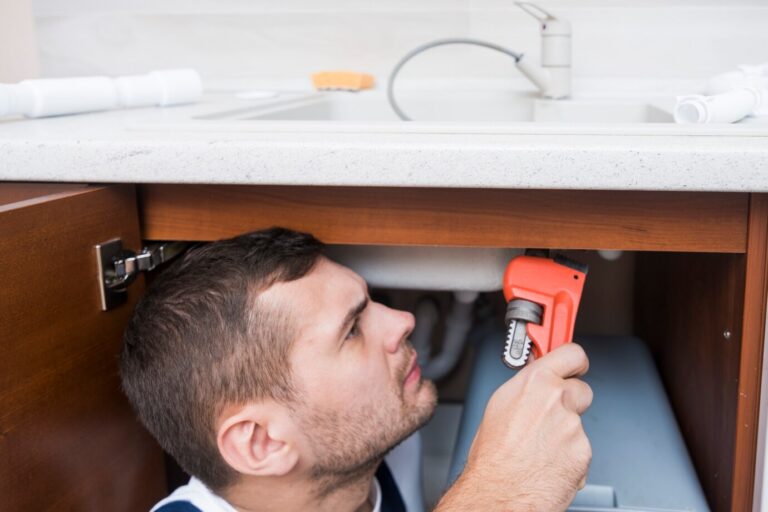Frozen pipes can become a major issue during the colder months, causing water flow to stop or even pipes to burst. This problem is especially concerning for homeowners in Athens, Georgia, where freezing temperatures can sneak up unexpectedly. Knowing how to identify and quickly fix frozen pipes can save you a lot of headaches and money.
When pipes freeze, the water inside expands, creating pressure that can lead to cracks or bursts if not addressed promptly. If a pipe bursts, you could face significant water damage in your home. Immediate action from experts like Sentry Restoration is needed to minimize the damage and prevent further problems.
Understanding Frozen Pipes
Frozen pipes occur when the temperature drops low enough for water inside the pipes to freeze. This can lead to blockages that stop water flow and create pressure on the pipes. In Athens, Georgia, where temperatures can dip unexpectedly, this becomes a significant concern for homeowners.
Frozen pipes can happen in any part of your home, but they are most common in unheated areas like basements, attics, garages, and crawl spaces. Pipes located against exterior walls or those without proper insulation are also more susceptible.
Recognizing the signs of frozen pipes is crucial. Signs include frost on the pipes, little or no water coming from faucets, strange odors coming from the drains, and visibly swollen pipes. Understanding these indicators will help you act fast to prevent severe damage.
Quick and Easy Fixes for Frozen Pipes
Tools You’ll Need
Having the right tools can make fixing frozen pipes much easier. Here’s a list of what you might need:
1. Hairdryer: A common household item to gently thaw pipes.
2. Space Heater: Useful for warming up the surrounding area.
3. Heat Lamp: Provides concentrated heat to specific sections.
4. Heating Pad: Wraps around pipes and emits consistent warmth.
5. Warm Towels: Can be wrapped around pipes to thaw them slowly.
6. Thermometer: Helps you monitor the temperature of the pipes.
Step-By-Step Instructions
1. Locate the Frozen Pipe: Check all the possible areas where a pipe could be frozen, such as under sinks and in the basement. Once found, open the faucet connected to allow water to flow out once it starts to thaw.
2. Apply Heat: Use a hairdryer, heating pad, or warm towels to slowly thaw the pipe. Start heating from the faucet end of the pipe and work your way back. Never use an open flame or a blowtorch, as this can damage the pipe and create a fire hazard.
3. Monitor and Continue: Keep applying heat until water flow is restored. Use a thermometer to ensure the pipe is warming up but not overheating.
4. Check for Leaks: Once water flow is restored, inspect the pipe for any leaks that might have developed due to the freezing. If you find any, turn off the main water supply and call a professional for repairs.
Following these steps can help you address frozen pipes quickly and efficiently, minimizing the risk of them bursting and causing further damage.
Addressing Water Damage From Burst Pipes
Immediate Steps To Take
When a pipe bursts due to freezing, quick action is crucial. Here are immediate steps to take to control the situation:
1. Shut Off the Water: Turn off the main water supply to stop more water from flooding your home. This prevents further damage and helps you manage the emergency more effectively.
2. Turn Off the Power: If water is near electrical outlets or appliances, turn off the electricity at the main breaker. This reduces the risk of electric shocks and fires.
3. Remove Standing Water: Use buckets, mops, or a wet/dry vacuum to remove as much water as you can. The faster you get rid of standing water, the less damage it will cause.
4. Move Valuables: Quickly move furniture, electronics, and other valuable items to a dry area to prevent further damage.
5. Ventilate the Area: Open windows and doors to help air circulate and start the drying process. Set up fans and dehumidifiers to speed up drying.
Following these steps can limit the damage and make the cleanup easier. Quick action also helps prevent mold growth, which can start within 24-48 hours.
Key Items for Water Damage Mitigation
Having the right items on hand can make water damage mitigation more effective. Here’s a list of must-have items:
1. Wet/Dry Vacuum: Efficient at removing standing water from floors and carpets.
2. Buckets and Mops: Basic tools to quickly collect and remove water.
3. Dehumidifiers: Reduces moisture levels in the air, speeding up the drying process and preventing mold.
4. Fans: Helps to circulate air and dry out wet areas.
5. Plastic Sheeting: Useful for covering and protecting unaffected areas or items.
6. Disinfectants: Important for cleaning surfaces and preventing bacteria and mold growth.
Using these items can help you manage water damage more efficiently and protect your home from further issues.
Preventing Future Freezing and Water Damage
Insulation Tips
Preventing pipes from freezing in the first place is the best approach. Here are some useful insulation tips:
1. Insulate Exposed Pipes: Cover pipes in unheated areas like basements, attics, and garages with foam insulation tubes. This keeps the pipes warm and prevents freezing.
2. Seal Gaps and Cracks: Check for and seal any gaps or cracks around windows, doors, and foundations where cold air can enter. Reducing drafts will keep your home warmer and protect pipes.
3. Install Heating Tape: Wrap pipes with electrical heating tape, which provides extra warmth directly to the pipes. Make sure to follow the manufacturer’s instructions for safe use.
4. Insulate Exterior Walls: Add insulation to walls where pipes are located to provide an extra barrier against the cold.
Implementing these insulation tips helps protect your pipes and reduces the risk of freezing and bursting.
Regular Maintenance Practices
Regular maintenance can prevent issues and ensure your pipes stay in good condition. Here are some maintenance tips:
1. Drip Faucets in Cold Weather: Letting faucets drip during freezing temperatures keeps water moving, which helps prevent pipes from freezing.
2. Check for Leaks: Regularly inspect your pipes for any signs of leaks and fix them promptly to avoid larger problems.
3. Maintain Consistent Temperature: Keep your home at a stable temperature, even at night. This helps protect pipes from sudden temperature drops.
4. Disconnect Outdoor Hoses: Remove and store garden hoses before winter. Close the inside valves that supply water to outdoor faucets and drain any remaining water.
Using these practices can help maintain your plumbing system and prevent unexpected emergencies.
Conclusion
Frozen pipes and water damage are serious problems that require immediate attention. Understanding how to spot frozen pipes and knowing the quick fixes can prevent a bigger disaster. If water damage does occur, taking swift action to mitigate it is essential.
Preventing future issues is also key. By insulating pipes and following regular maintenance tips, you can protect your home from freezing conditions and water damage. These steps will help ensure the safety and integrity of your plumbing system.
For expert help with water damage and mitigation in Athens, Georgia, trust Sentry Restoration. Contact us today to keep your home safe from water damage.



